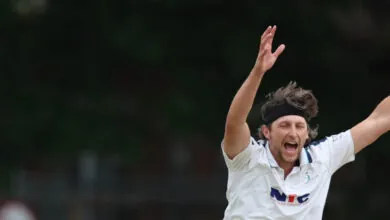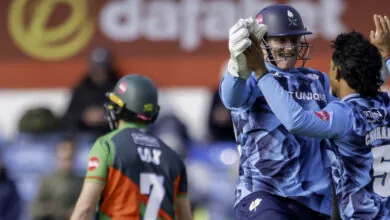Hollie Armitage and Katie Levick believe England is closing the gap to market leaders Australia in terms of the strength of their respective women’s structures.
The Yorkshire duo have been speaking ahead of this weekend’s start of the Women’s Big Bash League Down Under, a competition Armitage played in last year as an overseas player for Sydney Sixers.
Both internationally and domestically, it is widely accepted the Aussies lead the way in women’s cricket.
Their national side are ranked number one in the world in both one-day and T20 cricket at present – England are third and second in the same lists. They are currently on a 21-game ODI winning streak, equalling the world record (men or women).
Domestically, New South Wales Breakers became the first women’s team to go fully professional in 2016, with all others following.
Seven state teams play in the 50-over Women’s National Cricket League (WNCL). This summer, for example, they have all contracted 14 players excluding the centrally contracted players.
Then, the eight-team WBBL supplements that and gets more exposure both in Australia and globally.
In England, this summer has seen the first steps in a welcome move to professionalise women’s cricket below international level.
The ECB has introduced the eight Regional Centres of Excellence, with Yorkshire represented alongside Durham and Northumberland by the Northern Diamonds.
Three players are now full-time contracted to each region.
Yorkshire women’s captain Armitage, England fringe spinner Linsey Smith and former World Cup winning seamer Beth Langston are with the Diamonds, while there are imminent plans for two further contracts to be added in each of the eight regions.
Things have been complicated somewhat by Coronavirus, with the Diamonds playing in only a shortened 50-over – Rachael Heyhoe Flint Trophy – competition in August and September. The Diamonds were beaten finalists by Southern Vipers.
“Australia have got a fantastic set-up,” said Armitage, who is currently Down Under preparing herself for a winter of club cricket and coaching with Cricket Tasmania.
“They’ve got 14 or 15 professionals in each state, whereas we’ve only got five.
“But they’ve been professional for the last however many years, whereas it’s only just coming into play for us.
“For us, hopefully we can run alongside them as things develop.
“The Hundred will compare to their Big Bash and our domestic competitions can compare to their WNCL.”




